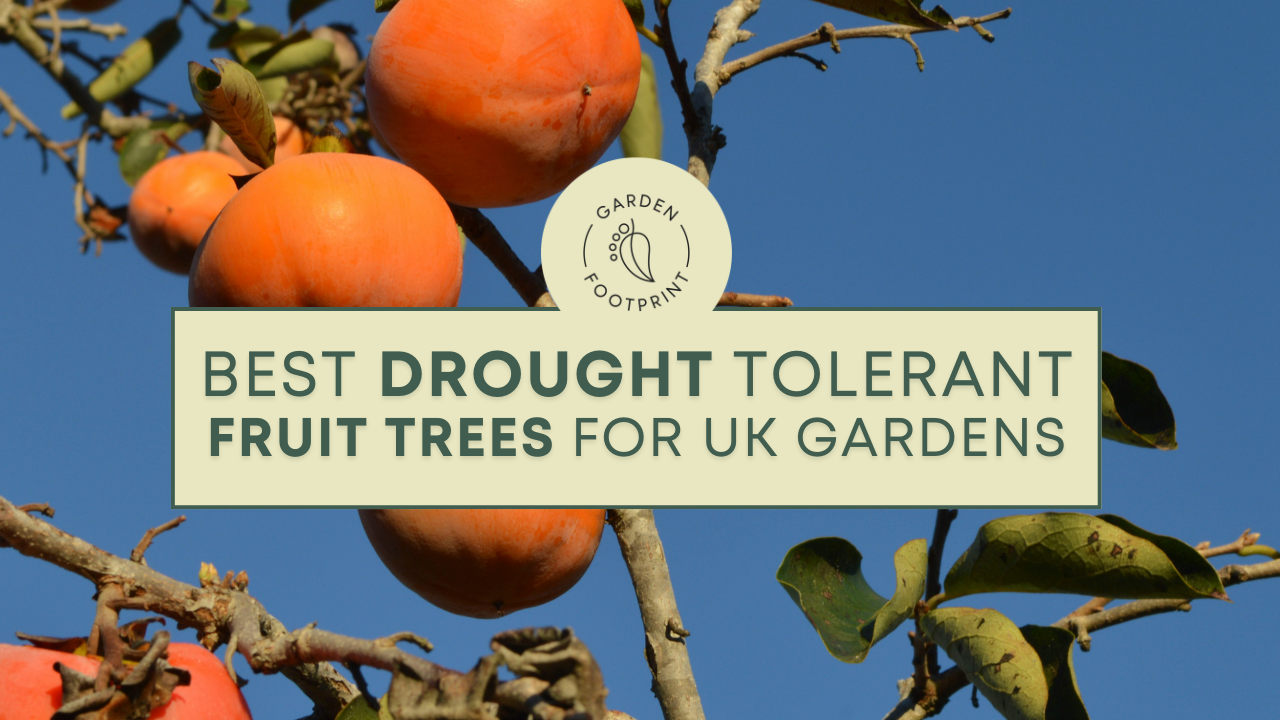
Best Drought-Tolerant Fruit Trees for UK Gardens
Oct 22, 2025Why drought resilience matters
In recent years, dry summers have become more common. Even in temperate regions like the UK, hosepipe bans and heatwaves are now a regular part of gardening life. Choosing drought-tolerant fruit trees isn’t just about saving water — it’s about future-proofing your garden. I'm planting now to stay ahead of climate change, rather than gardening in a reactive way.
These trees combine resilience with productivity. They keep cropping through dry spells, while supporting biodiversity and requiring far less maintenance than thirsty annual crops.
Top drought-tolerant fruit trees
1. Fig (Ficus carica)
Figs thrive in poor, dry soils once established. They love warmth, cope well with neglect, and reward you with sweet, exotic fruit in late summer. Perfect trained against a sunny wall or in free-draining borders. I grow a few varieties here in Cornwall, UK. Brown Turkey, Rouge de Bordeaux, Desert King and Pedro, a great yellow skinned one which hasn't cropped yet!
2. Mulberry (Morus nigra)
An old orchard favourite that shrugs off dry conditions. Mulberries are long-lived, resilient trees producing deep purple fruit with a rich, blackberry-like flavour. Attractive and functional, they earn their space. Mine died of a caterpillar attack when it was just a few inches tall but I plan to replace it soon!
3. Medlar (Mespilus germanica)
An unusual heritage fruit tree, medlars thrive in poor, dry soils. Their quirky brown fruit is eaten once “bletted” (softened) and has a flavour like spiced apple purée. A characterful, low-maintenance choice.
4. Almond (Prunus dulcis)
In the right spot — sunny, sheltered, and free-draining — almonds make an extraordinary garden tree. Blossom in spring is stunning, and with warming climates, UK harvests are becoming more realistic.
5. Persimmon (Diospyros kaki)
Persimmons handle summer drought surprisingly well once mature. Their glossy leaves and bright orange fruits bring a touch of the exotic to temperate gardens.
Tips for success
-
Plant young: Trees establish better if planted small, so roots adapt early.
-
Mulch deeply: Retains soil moisture and feeds soil life.
-
Choose rootstocks wisely: Some are more vigorous and drought-tolerant than others.
-
Mix with ground cover: Living mulches reduce evaporation and suppress weeds.
The bigger picture
Planting climate-resilient fruit trees isn’t just about coping with dry summers. It’s about designing gardens that will keep thriving as conditions shift. These choices cut your workload, reduce reliance on irrigation, and add biodiversity value to your space.
Next steps
-
Want more unusual, resilient crops? Download the Edimentals free guide for plants that are beautiful, edible, and tough.
-
Ready to design a future-proof garden? The Self-Sustaining Garden course shows you how to plant for resilience, biodiversity, and low maintenance.
Garden Footprint's aim is to make gardens low-maintenance, beautiful and edible. Check out our courses to start your journey!
Stay in the loop with Garden Footprint updates from Mike
Don't worry, your information will not be shared.
We hate spam. We will never sell your information, for any reason.

